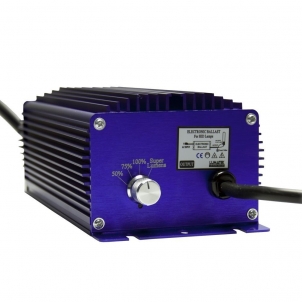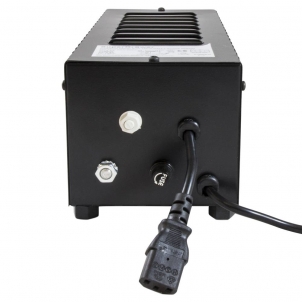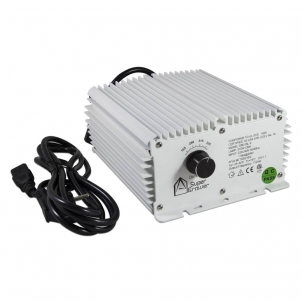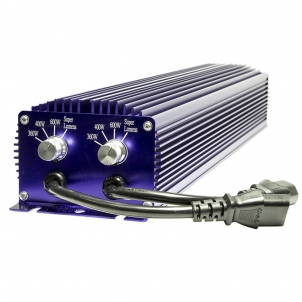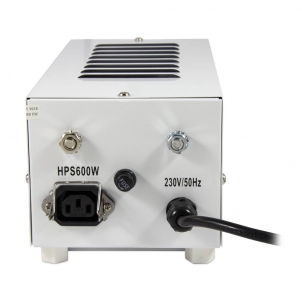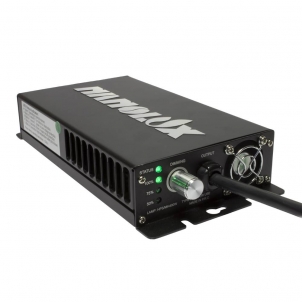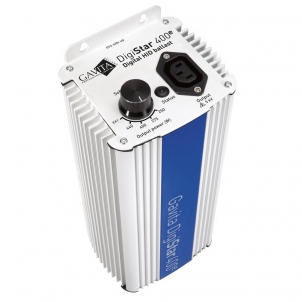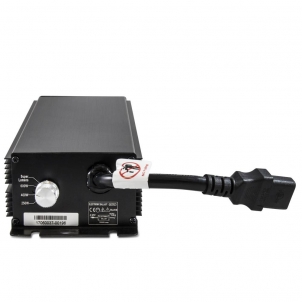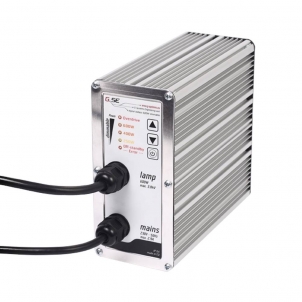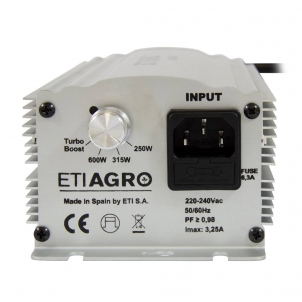Ballasts
The ballast power will depend on the size of the crop
It is important to note that the bulb we select for our crop must be of the same power as our ballast.
If the bulb has less power than the ballast, we could burn it out due to the current difference between the two elements.
However, if the ballast power is less than the bulb we place, it will not be able to give its original power, although it would not burn out as in the first case, unless we work with very low powers and in that case, it could happen that the current does not flow well and eventually burn out. An example of this would be using a 600w ballast with a 150w bulb.
Returning to ballasts, among their characteristics, we find important differences such as the power differential. The most commonly used ballasts on the market only have one output power, although more and more growers are opting for dimmable ballasts.
Ballasts with a single output power are usually used in crops that do not need different powers. The perfect example would be a grow tent with a mother plant, in which case we need to maintain the same power at all times. Another common case would be in grow tents used exclusively for flowering, where we also do not need a change in power.
Dimmable ballasts
These ballasts have the advantage of being able to regulate the power depending on the stage we are in. Normally, the options are 50%, 75%, 100% and 110%.
To give you an example and leave no doubt, if we have a 600w dimmable ballast, we can select different powers such as; 250w, 400w, 600w and +600w. In any case, dimmable ballasts have different powers and in the previous example, they could be regulated to the power we want and use a 600w bulb in all its phases without suffering any setback or problem within our crop.
Quick guide to ballasts in indoor cultivation
We will use the lowest power available to us to root cuttings or germinate our seeds.
We will use 75% for the growth phase of our crop.
100% is used for the flowering phase in which our plants need the most light we can provide. 110% or maximum power would be used for the final phase or bud fattening. This would always be provided that we have this extra option offered by dimmable ballasts.
Finally, when selecting our ballast, we must be aware that there are both electronic and magnetic ballasts. Electronic ballasts are usually dimmable and help us make better use of the energy we consume in our crop. Studies indicate that they provide 30% more light than magnetic ones. In the case of magnetic ballasts, there are no dimmable ones. Electronic ballasts keep the light fixed within the crop and do not flicker when starting, which will be very beneficial for our crop and will make our plants receive light more uniformly.
It is also worth highlighting one of the most important qualities of electronic ballasts, which is their silent operation, very important for non-soundproofed spaces. Almost all components are electronic parts, which means they do not emit any noise.
In addition, we have another reason why we like this type of ballast so much, and that is the temperature. These ballasts maintain an optimal temperature so that we can introduce them into our grow tent if we wish without any problem.
If our budget is tight and we want to opt for the classic, we have the magnetic option which is much more economical. The most common problems we find with this type of ballast are fundamentally the temperature they reach, the noise they emit, especially vibrations, and the loss of light that could be doing so much good for our indoor crop.
The light emitted by this type of ballast is discontinuous, and we can know with a technique available to everyone what type of ballast we have in front of us. You just need to focus your phone camera on the ballast light, and if you detect light bands, it is a magnetic ballast.
Never introduce a magnetic ballast into the grow area
Due to the temperatures it reaches, it can also affect our crop. There is only one dimmable magnetic ballast with a boost option that goes from 600w to 660w. In our ballast category, you can find all the options available in our catalog that best suit you and your crop.



